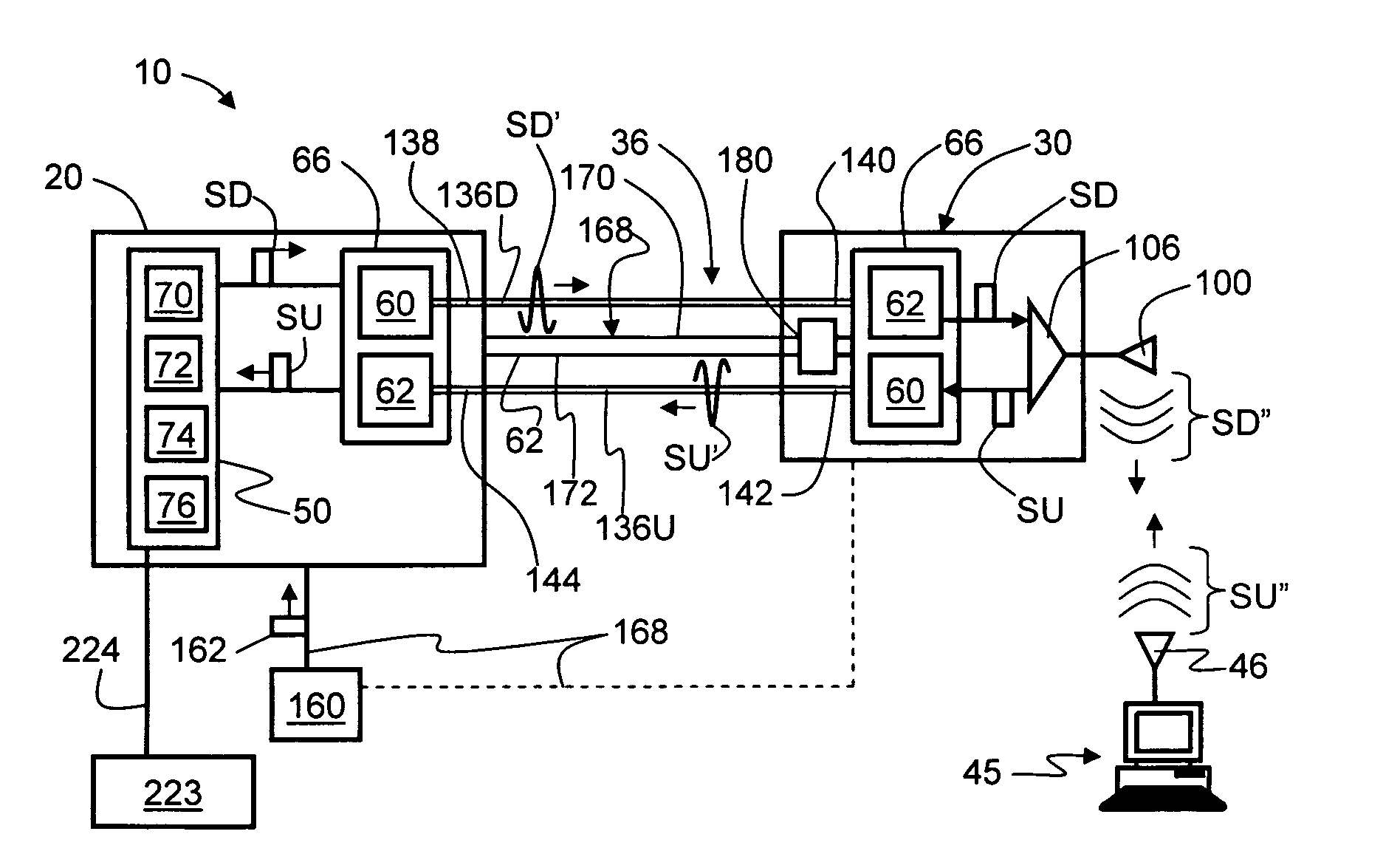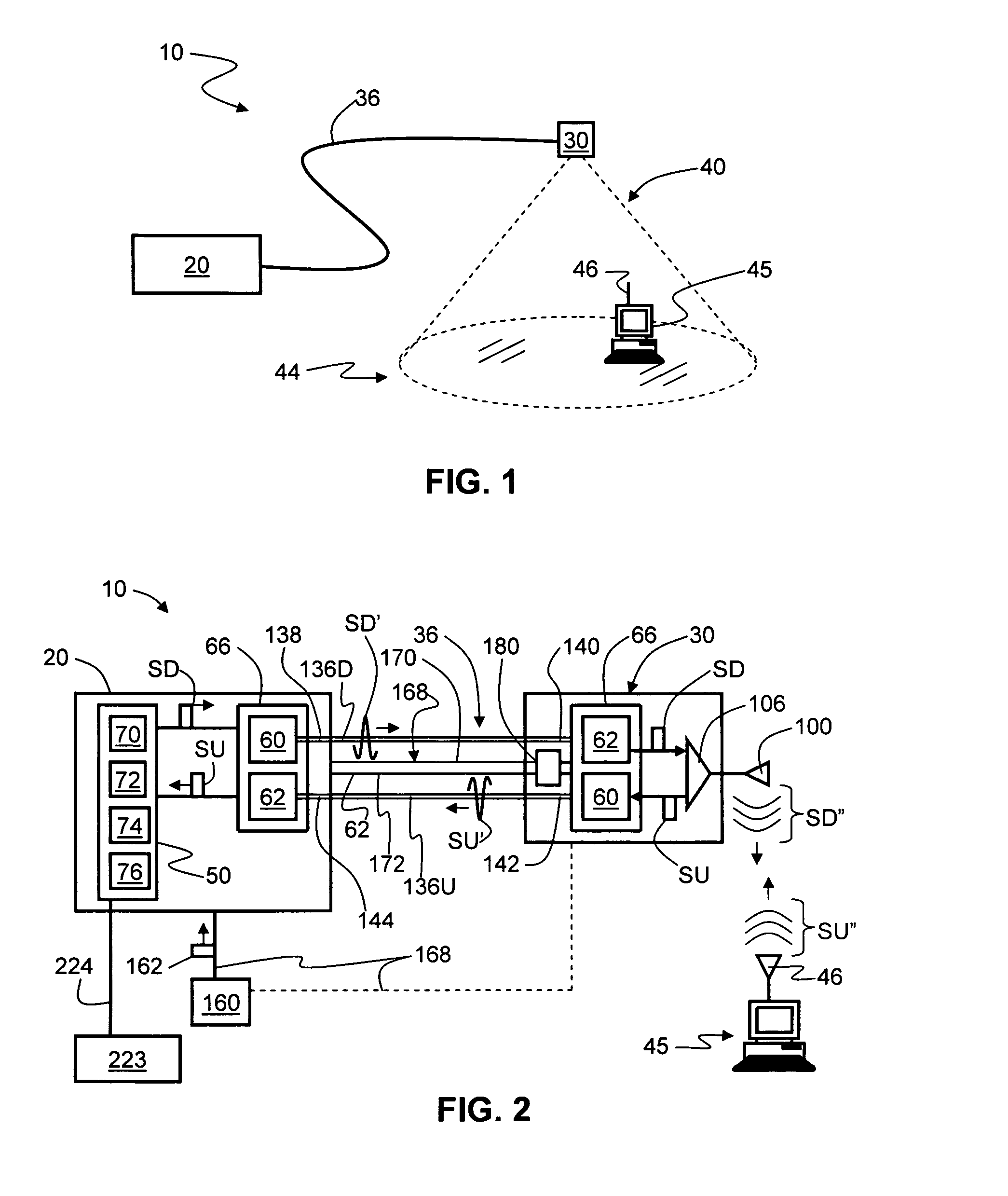Radio-over-fiber (RoF) wireless picocellular system with combined picocells
a wireless and wireless technology, applied in the field of wireless communication systems, can solve the problems of data transmission capacity, data transmission complexity, and relatively complex wireless system/network, and achieve the effects of improving data transmission capacity, simplifying distribution and use, and improving data transmission capacity
- Summary
- Abstract
- Description
- Claims
- Application Information
AI Technical Summary
Benefits of technology
Problems solved by technology
Method used
Image
Examples
Embodiment Construction
[0038]Reference is now made in detail to the present preferred embodiments of the invention, examples of which are illustrated in the accompanying drawings. Whenever possible, the same or analogous reference numbers are used throughout the drawings to refer to the same or like parts.
Generalized Optical-Fiber-Based Wireless System
[0039]FIG. 1 is a schematic diagram of a generalized embodiment of an optical-fiber-based wireless picocellular system 10 according to the present invention. System 10 includes a head-end unit 20, one or more transponder units (“transponder”) 30 and an optical fiber RF communication link 36 that optically couples the head-end unit to the transponder. As discussed in detail below, system 10 has a picocell 40 substantially centered about transponder 30. The one or more transponders 30 form a picocellular coverage area 44. Head-end unit 20 is adapted to perform or to facilitate any one of a number of RF-over-fiber applications, such as radio-frequency identific...
PUM
 Login to View More
Login to View More Abstract
Description
Claims
Application Information
 Login to View More
Login to View More - R&D
- Intellectual Property
- Life Sciences
- Materials
- Tech Scout
- Unparalleled Data Quality
- Higher Quality Content
- 60% Fewer Hallucinations
Browse by: Latest US Patents, China's latest patents, Technical Efficacy Thesaurus, Application Domain, Technology Topic, Popular Technical Reports.
© 2025 PatSnap. All rights reserved.Legal|Privacy policy|Modern Slavery Act Transparency Statement|Sitemap|About US| Contact US: help@patsnap.com



